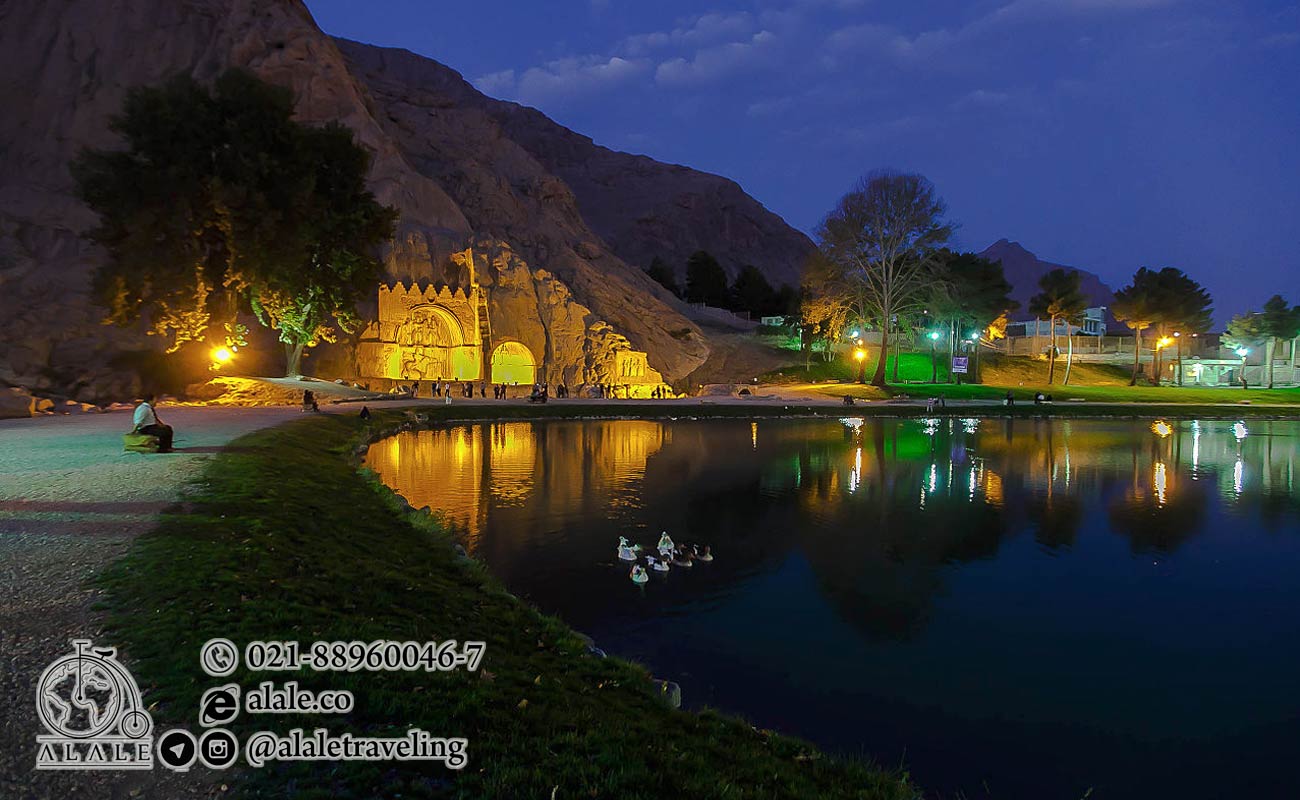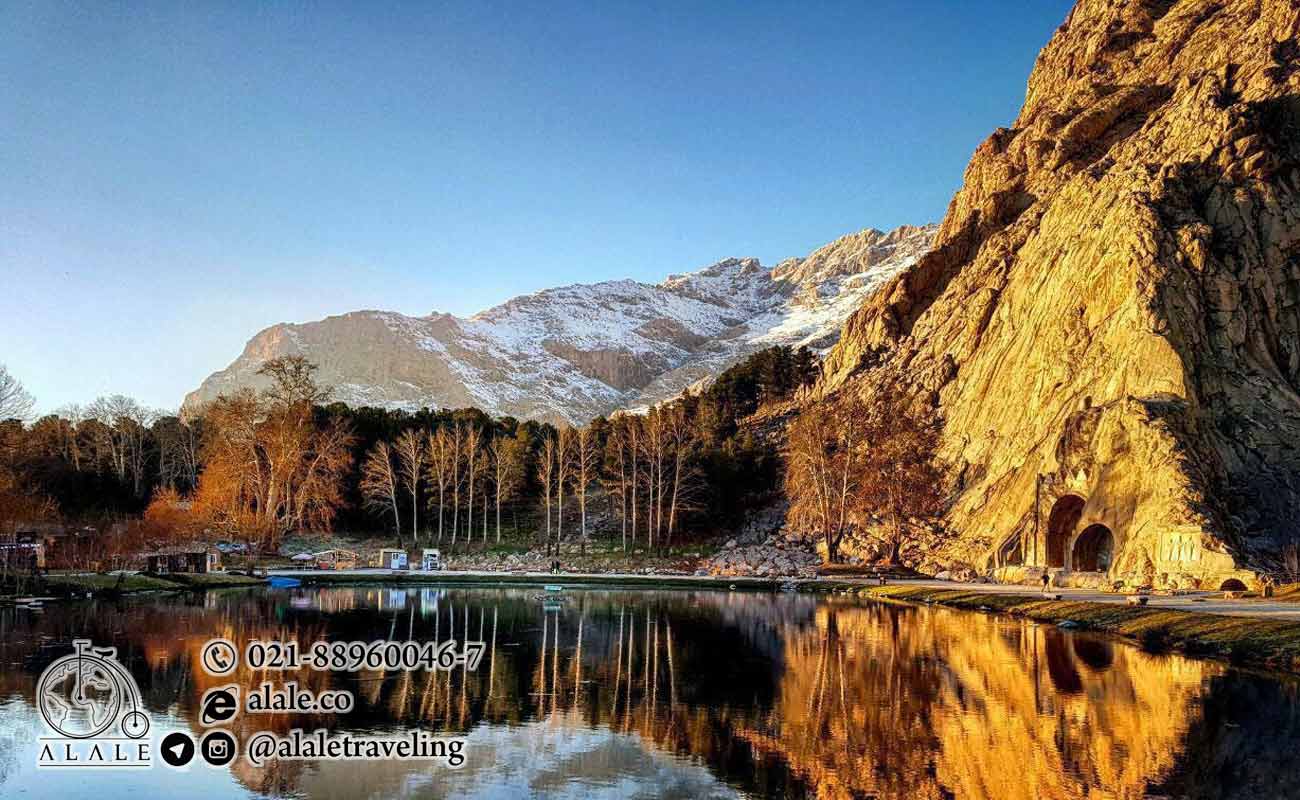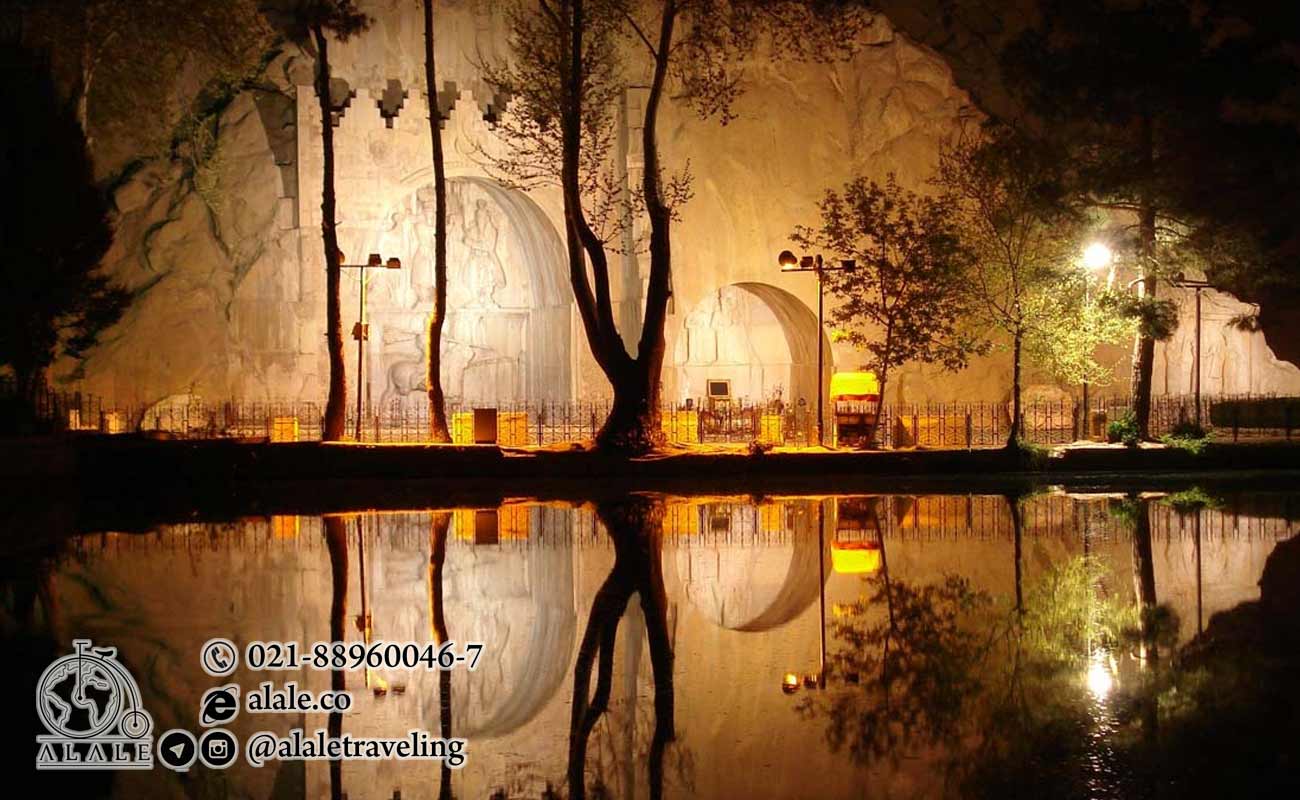Ṭāq-e Bostān, or Tāq-i-Bustān, village in western Iran, just northeast of Kermānshāh city. It is known for its rock carvings (bas-reliefs) of Sāsānid origin (3rd to 7th century ad). The carvings, some of the finest and best-preserved examples of Persian sculpture under the Sāsānians, include representations of the investitures of Ardashīr II (reigned ad 379–383) and of Shāpūr III (383–388), the latter in a man-made cave carved in the form of an iwan (three-sided, barrel-vaulted hall, open at one end).

Sassanian era bas reliefs set inside and around alcoves carved into the majestic Tag Bostan Mountains, a historic attraction that is surrounded by popular open air restaurants and a boating pond, is the attraction referred to as odyssey in Kermanshah.

The Sassanid kings chose a sensational setting for their rock reliefs Taghe-e-Bostan, four miles north-East of Kermanshah. A sacred spring gushes forth from a mountain cliff and empties into a large reflecting pool. In writer the entire scene is shrouded in mist and clouds.
One of the most impressive reliefs, inside the largest grotto or "ivan" is the gigantic equestrian of Sassanid king, Khosrow II (591-628 CE) mounted on his favorite charger, Shabdiz. Both horse and rider are arrayed in full battle armor. There are two hunting scenes on opposite side of the ivan, one depicts the imperial boar hunt and the other in a similar spirit shows the king stalking deer. Elephants flush out the feeling boar from a marshy lake for the king who stands poised with bow and arrow in hand serenaded by female musicians following in other boats. These royal hunting scenes are among the most vivid of all rock reliefs, true narrative murals in stone, Jumping 1300 years in time the upper relief shows the 19th century Qajar king Fath-Ali shah holding court.
Taq-e Bostan, relief
The relief at Taq-e Bostan shows the investiture of Shapur II (309-379). This is a common representation of royal power: the supreme god Ahuramazda gives the king a cydaris ring and a diadem.
The king is standing on top of a defeated enemy, a bearded man who can be identified with the Roman emperor Julian the Apostate, who had been defeated by Shapur in 363 and was killed in action. (This is, of course, the terminus post quem of this monument.)
Taq-e Bostan, investiture relief of Shapur II
The war ended with a treaty in which Julian's successor Jovian abandoned Roman possessions east of the river Tigris. The Iranian god responsible for treaties, Mithra, is also shown at Taq-e Bostan, holding a barsom, a sacred bundle of twigs used by religious rituals.

Some scholars have argued that the Sasanian ruler who is represented at the relief of Taq-e Bostan is not Shapur II, but his successor Ardašir III (379-383). This view, however, must be incorrect; the crown of the ruler represented at this relief is Shapur's, not Ardašir's. Besides, the emperor underneath the Sasanian king's feet can only be Julian. Ardašir's contemporary Theodosius I the Great had no beard and never waged war against Persia.
It may be interesting to know that the representation of Mithra at Taq-e Bostan was used as a source of inspiration by the anonymous artist who made a popular painting of Zarathustra, the Bactrian prophet of Zoroastrianism.
Submit Comment